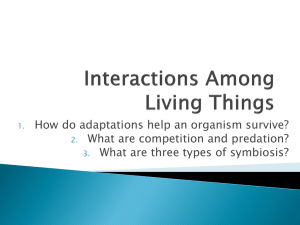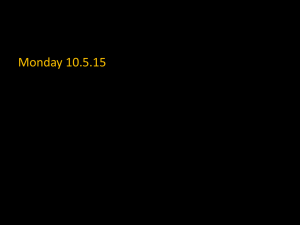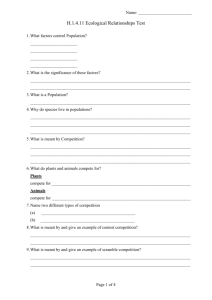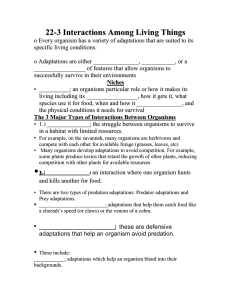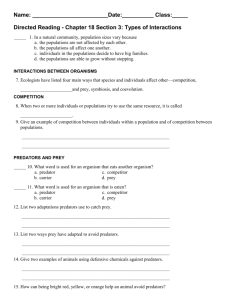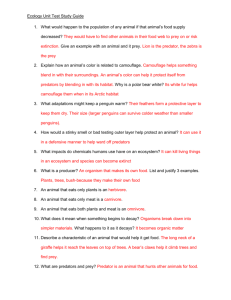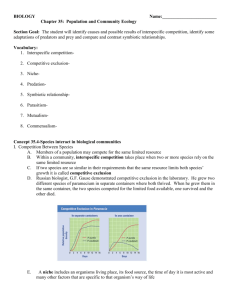Sections 2 & 3 Notes - Revere Local Schools
advertisement
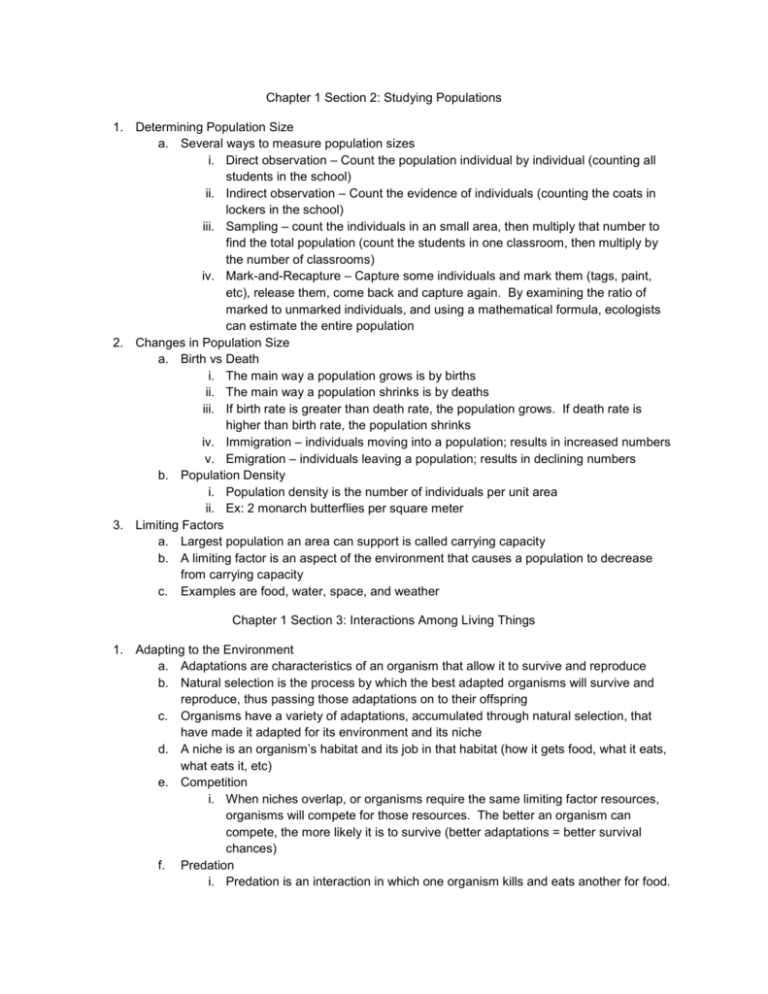
Chapter 1 Section 2: Studying Populations 1. Determining Population Size a. Several ways to measure population sizes i. Direct observation – Count the population individual by individual (counting all students in the school) ii. Indirect observation – Count the evidence of individuals (counting the coats in lockers in the school) iii. Sampling – count the individuals in an small area, then multiply that number to find the total population (count the students in one classroom, then multiply by the number of classrooms) iv. Mark-and-Recapture – Capture some individuals and mark them (tags, paint, etc), release them, come back and capture again. By examining the ratio of marked to unmarked individuals, and using a mathematical formula, ecologists can estimate the entire population 2. Changes in Population Size a. Birth vs Death i. The main way a population grows is by births ii. The main way a population shrinks is by deaths iii. If birth rate is greater than death rate, the population grows. If death rate is higher than birth rate, the population shrinks iv. Immigration – individuals moving into a population; results in increased numbers v. Emigration – individuals leaving a population; results in declining numbers b. Population Density i. Population density is the number of individuals per unit area ii. Ex: 2 monarch butterflies per square meter 3. Limiting Factors a. Largest population an area can support is called carrying capacity b. A limiting factor is an aspect of the environment that causes a population to decrease from carrying capacity c. Examples are food, water, space, and weather Chapter 1 Section 3: Interactions Among Living Things 1. Adapting to the Environment a. Adaptations are characteristics of an organism that allow it to survive and reproduce b. Natural selection is the process by which the best adapted organisms will survive and reproduce, thus passing those adaptations on to their offspring c. Organisms have a variety of adaptations, accumulated through natural selection, that have made it adapted for its environment and its niche d. A niche is an organism’s habitat and its job in that habitat (how it gets food, what it eats, what eats it, etc) e. Competition i. When niches overlap, or organisms require the same limiting factor resources, organisms will compete for those resources. The better an organism can compete, the more likely it is to survive (better adaptations = better survival chances) f. Predation i. Predation is an interaction in which one organism kills and eats another for food. ii. Predator is the organism doing the killing, prey is the organism doing the dying iii. High prey numbers allow predators to increase reproduction, increasing the population. Increased predator population means more deaths in the prey population, which limits the food for the predators. More predators starve and die. Therefore the prey species can increase in numbers again. iv. Predators and prey both have adaptations that allow them to excel at their roles 1. Predators can sting, run fast, see well in the dark, and use echolocation (like radar) 2. Prey can use camouflage, false coloring, protective coverings, mimicry, and warning colors to avoid being killed g. Symbiosis i. Symbiosis is a long term interaction between two species in which at least one species benefits. Mutualism Parasitism Commensalism
